|
|
 |
|
|
|
|
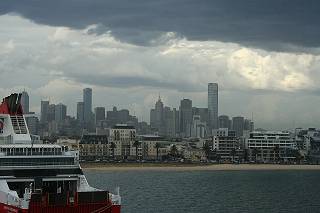
|
Melbourne is the second largest city in Australia.
This is the skyline we viewed as we came into Port.
The next ship over is one of the ferries used to
move people about. The morning was gray and looked
like rain. But the air was warm and would become
much warmer as the clouds broke and the sun shone.
The city is home to about 3 and three quarters
million people. It has a very fine and extensive
public transit system. I took a tram right at the
Port and rode to the center of the business
district. |
|
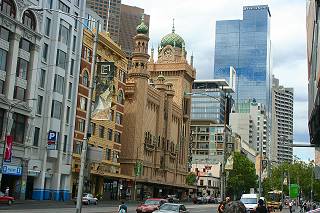
|
Melbourne is much flatter than Sydney, and this is
reflected in the lay out of the streets. The Yarra
River flows right through the city, creating many
opportunities for beautiful parks and recreational
use. We were fascinated by the blend of the very
modern and the older, sometimes very ornate
buildings.
Melbourne was founded nearly 50 years after
Europeans settled in Australia. Queen Victoria
declared it a city in 1847. |
|
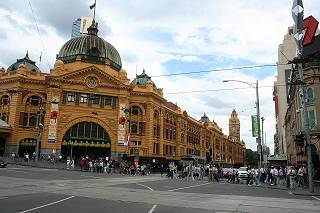
|
The city takes its name from the British Prime
Minister at the time, Wm. Lamb, who was Viscount
Melbourne (Derbyshire, England). This is the
Flinders Street Station, a landmark structure in
Melbourne. It sees over 100,000 people move through
it each day, and over 1500 trains travel through it
as well. The building was designed in 1899, and
construction began in 1901. It was completed in
1910. Melburnians have a saying: "meet you under the
clocks," referring to the entrance of the Station. |
|
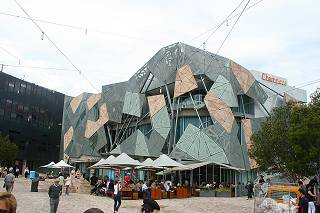
|
Directly to the east of the Victorian-style Station
lies the complex of buildings known as Federation
Square. It is home to a number of cafes and
restaurants, and to venues for various sorts of
performing arts. On the day we visited, a large
Greek Festival was underway. Every square inch was
filled with people, or food tables, or dancing
exhibitions - and music. |
|
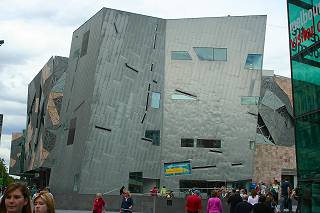
|
The "square" is actually a U-shaped plaza, with
weird buildings on all sides. Melburnians have very
mixed views about this project, which opened in
2002. And they are free to share their opinions with
visitors. Some love it. Some hate it. Whatever, it
has become a magnet for visitors to the city. |
|
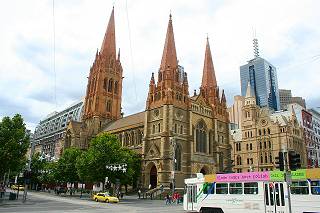
|
St. Paul's Cathedral is across the street from
Federation Square on the north (and diagonally
across from the Flinders St. Station). Its graceful
spires once dominated the skyline of the city.
Today, however, this active church is dwarfed by
many larger buildings. This is the seat of the
Archbishop of Melbourne. |
|